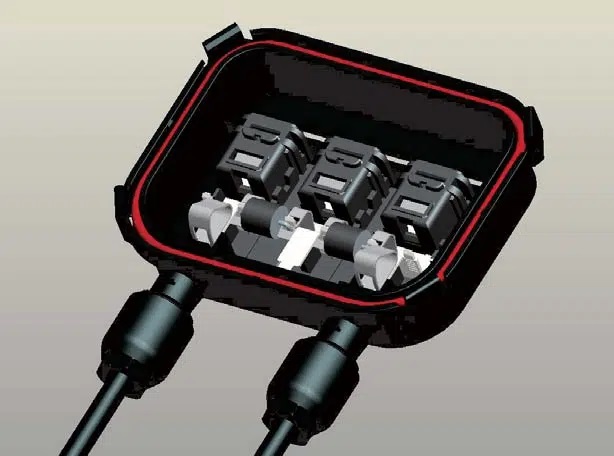The solar panel junction box is a crucial component that serves several important functions in a solar photovoltaic (PV) system. It is typically located on the back of the solar panel and is an integral part of the panel’s design. Here are the main functions of a solar panel junction box:
- Electrical Connection:
- The primary function of the junction box is to provide a point for connecting the electrical leads from individual solar cells within the panel. Solar cells are connected in series or parallel to achieve the desired voltage and current output.
- Bypass Diodes:
- The junction box often contains bypass diodes, which are used to minimize the impact of shading or cell mismatch issues. When a solar cell is shaded or not performing optimally, the bypass diode allows the current to bypass the affected cells, preventing a significant drop in the overall output of the solar panel.
- Electrical Isolation:
- The junction box provides electrical isolation and protection for the solar panel’s wiring and connections. This is essential to prevent electrical faults, short circuits, and damage to the panel’s internal components.
- Weatherproofing:
- Solar panels are exposed to various environmental conditions, including rain, snow, and humidity. The junction box is designed to be weatherproof, protecting the internal electrical components from moisture and other environmental factors.
- Cable Termination:
- The junction box serves as the termination point for the cables that connect the solar panel to the broader electrical system. These cables carry the generated electrical power from the solar panel to the inverter or other components of the solar power system.
- Safety:
- The junction box includes safety features to prevent electrical shock or fire hazards. It may have mechanisms such as overcurrent protection devices or fuses to safeguard the system.
- Temperature Control:
- The junction box plays a role in dissipating heat generated during the operation of the solar panel. This is important for maintaining the efficiency and longevity of the solar cells, as excessive heat can negatively impact performance.
- Monitoring and Electronics (Optional):
- In some cases, especially with advanced or smart solar panels, the junction box may incorporate additional electronics for monitoring and control purposes. These may include features like Maximum Power Point Tracking (MPPT) or communication interfaces for system monitoring.
In summary, the solar panel junction box serves as a critical interface between the solar cells within the panel and the external electrical system. It ensures the efficient and safe transmission of electrical power generated by the solar cells while providing protection against environmental factors and electrical faults. The specific design and features of junction boxes can vary among different solar panel manufacturers and models.


